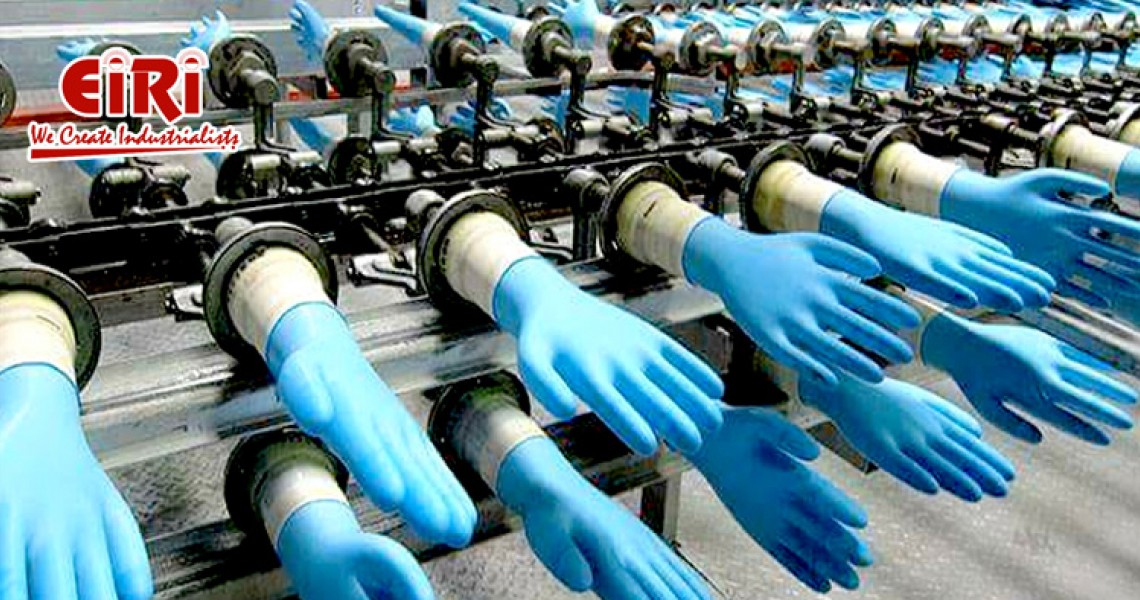The Complete Guide to Manufacturing Medical Gloves

Medical gloves play a crucial role in healthcare and various industries by providing a protective barrier against contaminants, pathogens, and harmful chemicals. They are widely used in hospitals, laboratories, clinics, and industrial settings. The increasing awareness of hygiene and infection control has driven the demand for high-quality medical gloves. Entrepreneurs venturing into this industry must understand the different types of gloves, including latex, nitrile, and vinyl, as well as the stringent quality standards required for their production.
The global demand for medical gloves has surged, especially after the COVID-19 pandemic, highlighting the necessity of protective equipment in healthcare and other industries.
The rise in surgical procedures, increased healthcare expenditure, and strict hygiene regulations have further boosted the market. Countries worldwide are strengthening their medical supply chains, creating lucrative opportunities for manufacturers. Additionally, innovations in glove materials, such as biodegradable and powder-free gloves, are expanding the market.
Types of Medical Gloves and Their Applications
Medical gloves come in various materials, each suited for specific applications. Latex gloves, made from natural rubber, offer excellent elasticity and comfort but may cause allergic reactions in some users. Nitrile gloves, a synthetic alternative, provide superior resistance to chemicals and punctures, making them ideal for medical and industrial use. Vinyl gloves, made from polyvinyl chloride (PVC), are cost-effective but less durable than latex and nitrile. Understanding these materials is essential for manufacturers to cater to different market needs.
Medical gloves come in various materials, each suited for specific applications:
- Latex Gloves: Made from natural rubber, these gloves offer excellent elasticity, comfort, and a high level of dexterity. However, they may cause allergic reactions in some users.
- Nitrile Gloves: A synthetic alternative to latex, these gloves provide superior resistance to chemicals and punctures, making them ideal for medical and industrial use.
- Vinyl Gloves: Made from polyvinyl chloride (PVC), these gloves are cost-effective and suitable for short-term, low-risk tasks but are less durable than latex and nitrile gloves.
Understanding these materials is essential for manufacturers to cater to different market needs.
Setting Up the Manufacturing Unit
Manufacturing medical gloves requires a well-planned facility equipped with advanced machinery and a controlled environment. The process involves raw material preparation, dipping, curing, and finishing. The production unit should comply with hygiene regulations, ensuring minimal contamination risks. Setting up the facility also involves securing reliable suppliers for raw materials, hiring skilled workers, and obtaining necessary certifications to meet global safety standards.
The Medical Gloves Production Process
The production of medical gloves involves several key stages to ensure consistency, quality, and compliance with regulatory standards. The process begins with preparing the raw materials, such as latex, nitrile, or vinyl. Formers (hand-shaped molds) are cleaned and coated to prevent adhesion before being dipped into the liquid polymer solution. After dipping, the gloves undergo a curing process in ovens, which enhances their strength and durability. The gloves are then leached in hot water to remove excess chemicals and proteins that may cause allergies. After drying, the gloves are tested, powdered or chlorinated for easy donning, and finally packaged for distribution.
Quality Standards and Regulatory Compliance
Medical gloves must meet stringent quality standards to ensure their safety and effectiveness. Regulatory bodies such as the U.S. FDA, European CE, and ISO set guidelines for manufacturing and testing gloves. Key quality parameters include tensile strength, elongation, barrier integrity, and powder content. Manufacturers must conduct rigorous testing, such as water leak tests and pinhole detection, to maintain compliance. Regular audits and certifications are necessary to ensure that products meet international healthcare standards.
Raw Material Sourcing and Cost Considerations
Securing high-quality raw materials is essential for producing reliable medical gloves. Latex, nitrile, and vinyl suppliers should be chosen based on material consistency, durability, and compliance with safety standards. The cost of raw materials can fluctuate, affecting production expenses. Manufacturers must establish strong supplier relationships and explore bulk purchasing options to optimize costs. Additionally, investing in alternative materials like biodegradable gloves can position businesses ahead of competitors in the sustainable products market.
Packaging and Distribution Strategies
Proper packaging is vital to protect gloves from contamination and ensure product longevity. Packaging options include single-use sterile packs for surgical gloves and bulk packaging for general-purpose gloves. Clear labeling with regulatory certifications and usage instructions enhances credibility. Distribution channels include direct sales to hospitals, partnerships with medical suppliers, and online retail. Establishing a robust supply chain and logistics network ensures timely delivery and market reach expansion.
Marketing and Branding in the Medical Gloves Industry
A strong brand presence is crucial for success in the competitive medical gloves market. Manufacturers should focus on product differentiation, such as offering hypoallergenic or eco-friendly gloves. Digital marketing, participation in trade fairs, and collaborations with healthcare institutions can boost brand recognition. Educational content about the benefits and proper usage of gloves can further engage potential buyers. Establishing trust through quality assurance and customer service helps in gaining long-term clients.
Sustainability and Future Trends in Medical Glove Manufacturing
Sustainability is becoming a key factor in glove manufacturing, with growing demand for biodegradable and recyclable gloves. Manufacturers are exploring plant-based materials and innovative production techniques to reduce environmental impact. Automation and AI-driven quality control systems are improving efficiency and product consistency. As global health concerns continue to rise, the demand for medical gloves is expected to remain strong, offering manufacturers ample opportunities for growth and expansion.
Conclusion
The medical gloves industry presents a promising opportunity for entrepreneurs looking to enter the healthcare manufacturing sector. Understanding the production process, ensuring compliance with stringent quality standards, and implementing effective marketing and distribution strategies are essential for success. With rising global demand and ongoing innovations in materials and sustainability, manufacturers who invest in high-quality production and efficient operations can build a profitable and resilient business in the medical gloves market.










